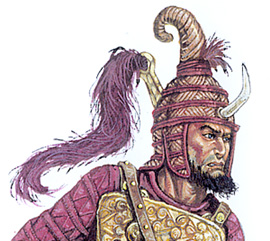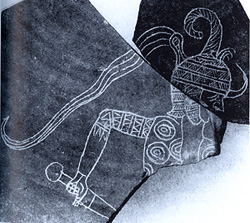Seriously people, I'm going to propose one thing for you:
Post your theories backed by some serious research, with links, references from the text and etc., and most importantly, why you are defending some point, not just images.
First, because source material alone can render lots of interpretations, and doesn't prove anything. For example:
There are acessments of really big 8 kg heavy Zweihänder swords. If you show only the image and claim "look, people wielded 8 kg swords into battle!" it would be dead wrong, because if you research a little you'll see that they are known to be used in parades, and nicknamed Paratschwert for a reason.
Second, though some of the artistic depictions may be accurate and backed by studies (or sometime source material), most of them are somewhat correct but have a lot of pure imagination and artistic license. And a lot of 'accessible' books illustrations seems to have this issue.
Without a cross reference and a serious study of the matter, this kind of source can be easily misinterpreted, and the wildest claims can be made and the nonsense become rampant.
Post your theories backed by some serious research, with links, references from the text and etc., and most importantly, why you are defending some point, not just images.
First, because source material alone can render lots of interpretations, and doesn't prove anything. For example:
There are acessments of really big 8 kg heavy Zweihänder swords. If you show only the image and claim "look, people wielded 8 kg swords into battle!" it would be dead wrong, because if you research a little you'll see that they are known to be used in parades, and nicknamed Paratschwert for a reason.
Second, though some of the artistic depictions may be accurate and backed by studies (or sometime source material), most of them are somewhat correct but have a lot of pure imagination and artistic license. And a lot of 'accessible' books illustrations seems to have this issue.
Without a cross reference and a serious study of the matter, this kind of source can be easily misinterpreted, and the wildest claims can be made and the nonsense become rampant.















